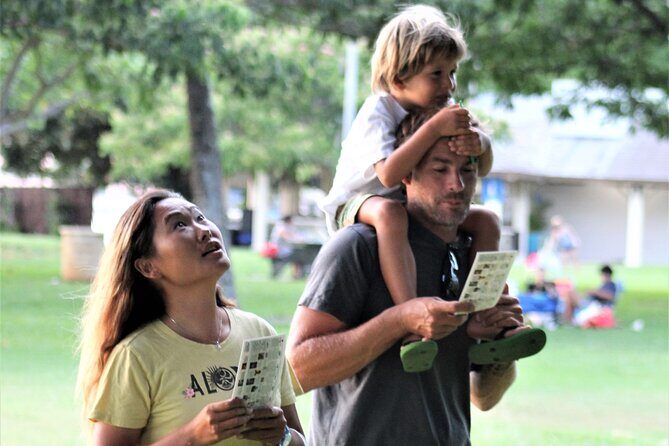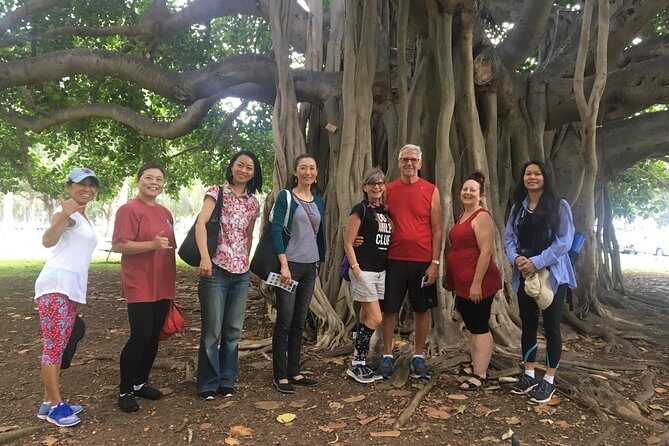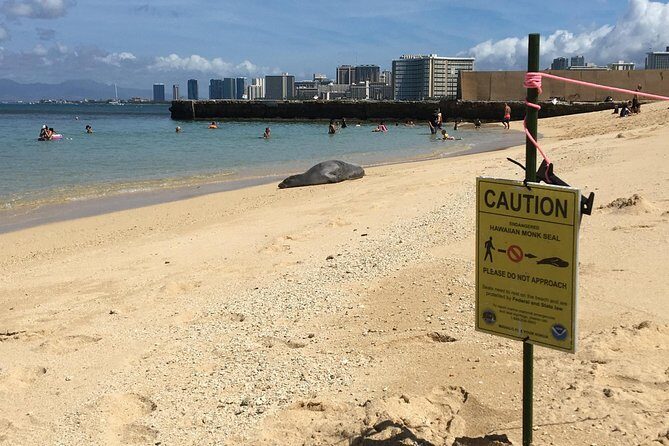Physical Address
304 North Cardinal St.
Dorchester Center, MA 02124
Physical Address
304 North Cardinal St.
Dorchester Center, MA 02124

Discover Oahu's history and nature on this affordable 2-hour walking tour, exploring Waikiki’s landmarks, wildlife, and geological wonders with expert insights.
Exploring Waikiki’s Hidden Stories with the East Waikiki Walking Tour
If you’re seeking a way to experience Waikiki beyond the usual sunbathing and shopping, the East Waikiki Walking Tour offers a thoughtful, educational stroll through some of the area’s most iconic sites. Priced at just $14 and lasting around two hours, this tour aims to blend local history, natural beauty, and sustainability into a compact package. With expert guides who hold advanced degrees, you’ll get more than superficial sightseeing—they’ll share deep insights into Hawaiian flora, fauna, and the stories that shaped the islands.
What we really appreciate about this experience is the focus on educational value and sustainability. The guides don’t just point out landmarks—they discuss geology, social issues, and environmental impacts that influence Waikiki today. That said, one key consideration is the relatively small group size—up to just four travelers—which can be fantastic for personalized attention but may require booking well in advance. This tour seems perfect for travelers craving a meaningful, grounded introduction to Waikiki, especially those interested in the area’s history, ecology, and ongoing social conversations.

If you enjoy exploring Oahu on foot, these walking tours might also suit your style
Our journey begins at the Waikiki War Memorial Natatorium, an evocative site that offers more than just a swimming pool in the ocean. Here, guides share stories from Hawai’i’s involvement in the world wars, framing Waikiki’s history within a broader Pacific context. The natatorium itself is an intriguing, somewhat abandoned structure that symbolizes both remembrance and decay—perfect for reflecting on how Hawaii’s past continues to shape its present. The admission is free, making this a meaningful yet cost-effective start.
Next, we stroll to Kaimana Beach, a historic spot in the surf community. The guides explain the origins of surfing in Hawai’i, touching on the early surf schools and the rivalry between Outrigger and Hui Nalu—two of the original surf clubs. These stories are not just about sport but about Hawaiian identity and how surfing became an international symbol of paradise. Guides also mention the rare Native Hawaiian monk seals that haul out here, adding an element of wildlife wonder. While the encounter with the seals is not guaranteed, the possibility of spotting one adds a special dimension. The beach is a quiet break from the urban buzz and a great place for photos.
A short walk takes us into Kapiolani Park, a lush, expansive green space perfect for a quick rest and some snapshots. Here, the guide encourages us to enjoy locally made mochi ice cream—a sweet treat that highlights Hawaii’s blend of local flavors and craftsmanship. The park serves as a backdrop for discussions about urban green spaces in Waikiki and their role in local social life.
Moving along, the tour circles the Honolulu Zoo, where you’ll hear tales about some of the animals that have called it home. While not a dedicated zoo visit, the stories shared here deepen the connection to Hawaii’s native and introduced species, emphasizing conservation efforts and ecological balance. This segment appeals to animal lovers and adds a layer of understanding about Hawaii’s diverse ecosystem.
The final stop takes us along the base of Diamond Head (Le’ahi), one of Hawaii’s most recognizable volcanic craters. The guide explains the geological forces that built this iconic feature, offering a window into the island’s volcanic origins. Though we don’t ascend the crater on this walk, the explanation of its formation helps clarify why Hawai’i has such unique landscapes and why conservation of these natural wonders is crucial.

The tour begins at 9:00 am from a convenient meeting point on Kalakaua Avenue—close to public transportation, which simplifies logistics for visitors. The small group size (max 4 travelers) means you’ll get personalized attention, tailored insights, and more chances to ask questions. The guide, likely someone with an advanced degree in Hawaiian studies, brings depth to each stop, making the experience both educational and engaging.
Snacks are included—specifically, locally made mochi ice cream, providing a refreshing break mid-tour. While bottled water isn’t supplied, sterilized hydroflasks are available for use, so bringing your own bottle is optional but recommended. The tour is suitable for those with moderate physical fitness, as it involves walking and some standing, but it’s generally accessible.
The tour’s price, at just $14, is very wallet-friendly, especially considering the focus on meaningful storytelling rather than just sightseeing. That said, reviews reveal some variability; one reviewer noted a guide who didn’t show up, so verifying your booking ahead of time is wise.

While most reviews aren’t 5-star, the feedback highlights an important aspect: the guides’ knowledge and storytelling are key to the experience. One reviewer, Chuck_H, had a disappointing encounter with a no-show guide, emphasizing the importance of confirming reservations.
Conversely, the emphasis on sustainability and local history is a standout feature, with guides striving to educate visitors on the impacts of industry and promoting responsible tourism. The inclusion of local treats like mochi ice cream is a thoughtful touch that enhances the relaxed, community-focused vibe of the tour.
This walking tour is tailored for curious travelers who want a deeper understanding of Waikiki and its surroundings. It’s ideal for those interested in history, geology, wildlife, and social issues, rather than just taking selfies at touristy spots. It’s also a great choice for visitors with a moderate level of fitness who prefer a small-group experience that’s both personal and insightful.
If you’re after a quick, superficial overview, this might feel a bit detailed. But for those eager to connect more meaningfully with Hawai’i’s stories—past and present—it’s a valuable addition to your trip.
The East Waikiki Walking Tour stands out as a budget-friendly, educational opportunity to explore some of Waikiki’s most meaningful landmarks while gaining insight into Hawaiian history and natural landscapes. The focus on sustainability and authentic storytelling adds a layer of depth that larger, more superficial tours often lack. With small group sizes, expert guides, and a well-rounded itinerary, it offers a balanced blend of culture, nature, and social awareness.
This tour is best suited for travelers who crave a personalized, informative experience and are eager to learn about Hawai’i beyond its surf beaches and luxury hotels. While it might not be perfect for everyone—especially those who prefer a more casual or self-directed outing—it’s a smart choice for those wanting a thoughtful introduction to Waikiki’s stories and landscapes.

How long does the East Waikiki Walking Tour last?
The tour lasts approximately 2 hours, offering a compact but comprehensive walk through Waikiki’s key sites.
What is the starting point for the tour?
It begins at the Public Art “Surfer on a Wave” on Kalakaua Avenue, close to public transportation options.
Is the tour suitable for children or those with limited mobility?
While not explicitly stated, the moderate physical activity suggests it’s best for travelers with decent mobility and fitness levels.
Are snacks and water provided?
Yes, locally made mochi ice cream is included as a snack. Water is not provided but sterilized hydroflasks are available for use.
What should I know about the group size?
The tour is limited to a maximum of 4 travelers, perfect for personalized attention but requiring early booking due to limited slots.
Can I cancel if my plans change?
Yes, the tour offers free cancellation up to 24 hours in advance for a full refund.
This walking tour offers a meaningful way to connect with Waikiki’s diverse stories while being budget-conscious and environmentally aware. It’s a solid choice for curious, socially conscious travelers eager to explore Hawaii beyond the typical tourist spots.